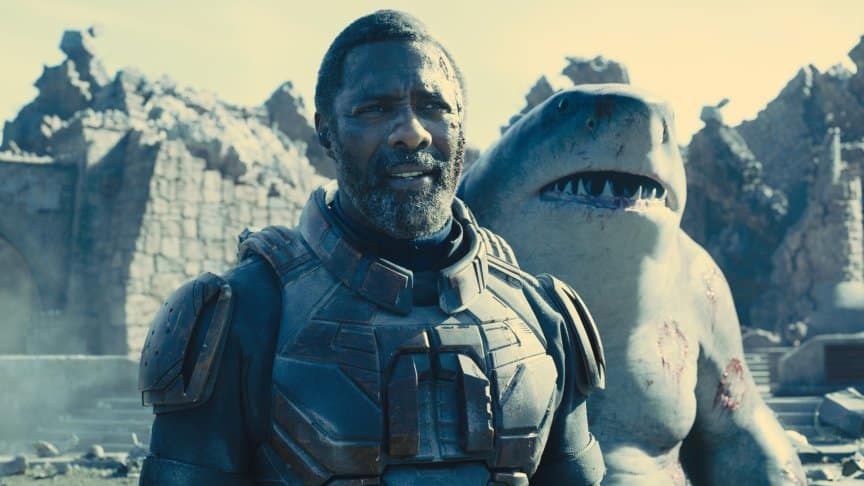There are many important aspects to writing a great screenplay; good dialogue, interesting settings, unique stories, and good characterisation. However, little is arguably more important than creating and maintaining empathetic characters.
Empathetic characters are the cornerstones of most great stories. Without an empathetic protagonist, in particular, the audience may struggle to connect to your story, narrative arcs, themes and even setting.
Even the seemingly most unlikeable of characters will have something in the way of empathy; a reason to be on their side. Essentially, an empathetic character should give the audience a chance to live vicariously through the story.
But before writing screenplays with character empathy in abundance, you need to understand what an empathetic character is and how best to create one in the first place. So in this article, we explore what you need to know about what empathetic characters are and the building blocks to bringing them to life in a screenplay.
Table of Contents
What is Empathy and What are Empathetic Characters?
Empathy can often be confused with sympathy. While similar, sympathy is the action of feeling pity or sad on the behalf of someone else.
Merriam-Webster defines empathy as:
“The action of understanding, being aware of, being sensitive to, and vicariously experiencing the feelings, thoughts, and experience of another of either the past or present without having the feelings, thoughts, and experience fully communicated in an objectively explicit manner.“
Merriam-Webster
In layman’s terms, empathy is the act of relating to another. This can be a real person or a fictional character. An empathetic character isn’t a character who relates to others. They are a character we, as the audience, can relate to or empathize with.
Character empathy is important in screenwriting in order to establish the investment in the arc of said character. Without it, it can be a struggle to stay engaged in the story for the time we need to be. Without convincing character empathy, characters become too objective and inscrutable. They’re hard to grasp and ultimately boring to watch.

The Building Blocks of Writing Empathetic Characters
There are a number of ways to write empathetic characters. The truth is that every writer finds their own way of achieving character empathy within their screenplays. It’s important to find what works for you and more importantly, what works for your story and your character.
There are, however, some essential and useful building blocks to help create character empathy easily.
1. Create a Sympathetic Backstory
Sympathy, as discussed above, is the act of feeling sad on the behalf of someone or something else. Empathetic characters often have a sad backstory or an unrealized inner struggle. Both are reasons for audiences to sympathize, and therefore empathize with a character.
When audiences sympathize with a character due to their circumstances, it helps the audience engage with the character’s arc.

Rey from the Star Wars franchise, for example, is an empathetic character that has a sad backstory.
- She was effectively left to fend for herself as a child on an unknown planet.
- Audiences sympathize with her for this and in turn, root for her to succeed.
But why is this the case? The simple answer is that a character is easier to root for when there is discernible conflict in the story. If things have felt too easy for this character, both within and outside the confines of the story, the stakes are lower.
A character with something of a challenging backstory is one for whom the stakes are likely high. In turn, this makes the story we witness more meaningful and engaging, as we recognize the importance it holds for the character in a holistic sense.
2. Create Danger
Writers can create character empathy by giving the character some stakes and putting them in danger, physically or emotionally.
When a character overcomes danger, similar to the effect of creating sympathy, audiences root for them more.
- In Get Out, for example, the protagonist, Chris, is vulnerable from the start. At first, this is just due to meeting his girlfriend’s parents for the first time.
- But there’s also more to his jeopardy that the audience understands in the context of race in America.
- The jeopardy evolves into danger when Chris realizes his girlfriend is part of a sinister plot.
- The audience initially roots for Chris to impress his new in-laws. As the stakes rise higher, so does audience interest.
- Eventually, Chris does escape, which is a huge payoff for the audience.
- The stakes are high initially, the journey is genuinely hazardous and the eventual win for the protagonist, therefore, is highly cathartic.

3. Create a Psychological Connection
If the audience like a character they’ll be a lot more likely to empathize with them. Empathetic characters being likable, however, is important but not entirely necessary.
A perfect example of this is a character like Tony Soprano.
- Tony Soprano just about ticks about every box in terms of being unlikeable. He’s vulgar, violent, temperamental, and erratic.
- There is, however, a kernel of empathy and likability in his characterisation. Despite everything, we are largely on his side. And we have to be considering he’s the protagonist for six whole series of TV.
- This is because the series is brilliant at plunging us into Tony’s mind. We come to understand his psyche and his concerns.
- Even if his actions are repugnant, there is a layer of vulnerability that we, the audience, are partial to, more than anyone else within the story.
Tony Soprano might be hard to define as likable. But does his struggle generate empathy and understanding? Do we gradually begin to understand where he is coming from psychologically? Unequivocally, yes.

4. Relatability
It’s easier for audiences to empathize with a character when we can relate to where they are, literally or in their life.
A great example of this comes from the recently Oscar-nominated Aftersun. Paul Mescal’s character, Calum, is in many highly relatable situations:
- The setting of a beach holiday.
- He’s a young, single father.
- The character suffers from mental health issues, such as depression and anxiety.
- He clearly has some money issues.
- He desperately wants a good relationship with his daughter, despite all the external circumstances that make this difficult.
He’s a character in a position that many will relate to. And even if there are aspects of the character that may be less immediately relatable (such as him being a father), there’s enough texture to his character and the story that an audience will likely find something identifiable and relatable.
So empathetic characters must be multi-faceted as not only does this make for a richer character but it heightens the likelihood of relatability. Give your character and their context a multiplicity and the audience is more likely to find something they relate to amidst this richness.
5. Give the Character a Skill
Audiences also tend to empathize with characters that have some kind of special skill, characteristic or power. This skill can be anything from athletics, to solving crimes, to telling jokes. But witnessing a character own this skill and embrace their individuality is a rewarding trait to follow.
Furthermore, audiences are often fascinated by characters who wield any power. When those characters wield that power honorably and humbly, audiences are more likely to respect and admire them. This further invests the audience in the character’s journey.
A standout empathetic character in this respect is Harry Potter.
- From the very start, audiences are aware that Harry is the ‘chosen one’.
- As audiences watch him grow and fulfill his potential throughout the franchise, their empathy for him grows too.
- Although he has flaws and moments of weakness, Harry is rarely arrogant in his identity as the chosen one.
- At the same time, he grows into his powers. He learns and eventually, leans into the full capacity of what his identity means for the fight against Voldemort.
A skilled character makes for a more empathetic character in that they will be impressive and idiosyncratic. However, it’s watching them relate to this skill – ideally with some growth, learning, struggles but eventual ownership – that will truly make them empathetic.
6. Character Flaws
Writers need to give their characters flaws in order to make them relatable to audiences.
If your main character is perfect then the chances are that audiences won’t take to them. Audiences prefer to see characters that are more human, and part of being human includes having flaws. A character that stumbles is a character that elicits conflict in the attempt to achieve their goals.
Superman is an empathetic character with a very famous flaw/foible.
- If it weren’t for Kryptonite, Superman would be too overpowered and therefore less relatable to audiences.
- If Superman’s true identity was revealed, he’d put his family and loved ones in danger.
It’s a classic example but demonstrates the point perfectly and simply. A superhero who has absolutely no flaws is one that is hard to relate to as there will be no obstacles to their goal and no conflict in their journey. Instead, Kryptonite becomes an important part of Superman’s story in the way that it is constantly used as a weapon against him.

7. Why a Character Acts The Way They Do
Character empathy can come from unlikely sources – villains, anti-heroes, and even misunderstood characters.
As discussed with Tony Soprano above, audiences can empathize with objectively amoral characters. However, the key to achieving this is making sure the audience (at least partially) understands why the character does the things they do and behaves in the way they do. Even if those things are wrong objectively, the audience must have a sense of where it comes from in their backstory and what keeps driving it.
Take The Avengers supervillain, Thanos. In the light of understanding a character’s actions, it can be argued that he is an empathetic character.
- His main goal to bring peace to the entire universe is admirable. However, the way he tries to achieve this is downright evil.
- In order to stop the draining of the cosmos’ natural resources, he plans to eradicate half the universe’s population with a click of his fingers.
The writers show you why Thanos is reaching for his extremely evil plan. In Avengers: Infinity War he says:
“Titan was like most planets; too many mouths, not enough to go around. And when we faced extinction, I offered a solution.“
Thanos – Avengers: Infinity War
His plan to decimate half the universe’s population is understandable when the audience positions themselves in his shoes.
This is an expert use of empathy as the means are completely objectionable and ultimately we want Thanos to fail. We feel that he has lost sight of the most important things in the quest for his overarching goal.
However, we understand where he’s coming from and his aims, therefore, are more understandable, tangible, and even threatening. This isn’t just a formulaic desire to take over the world, it’s something much more relatable and grounded.

8. Trying, Maybe Failing
Our heroes don’t always need to succeed, especially at first. Similarly to having conflict in their journey and displaying flaws, a character usually needs to have some kind of stumble for us to feel more empathy for them. A straight route to achieving their goals isn’t going to be as rewarding to watch as someone who has a bumpy path but makes it anyway.
It’s in the most challenging moments, after all, that characters can reveal their true strengths. Perhaps even, the character doesn’t achieve, or only partially achieves their goals. But in watching them trying, we’re watching a character seeking to overcome the challenges in front of them.
These challenges can be literal and physical or emotional. Perhaps they partially succeed but can’t completely overcome their flaws and the obstacles in their way. But in witnessing them in their attempt, we form a bond. In the discrepancy between what they want and what they’re able to achieve a connection is formed between the character and the audience.
Again, we can use Aftersun as an example here.
- Calum is attempting to maintain the strained connection between himself and his daughter, Sophie.
- Whilst Sophie, in the present, reflects back on her relationship with Calum.
- Both are trying but not always succeeding in expressing the full truth of how they feel about each other.
- Particularly for Calum, we feel empathy. We can see he’s trying his hardest with Sophie, but struggles with his mental health silently. There’s a barrier between him and Sophie, despite Calum’s best efforts.
It’s the trying and not necessarily the simple success of the characters that creates empathy here.
We’ve established some of the building blocks to creating empathetic characters. So now let’s take a closer look at one film’s use of empathetic characters.
James Gunn’s Empathetic Characters in The Suicide Squad
Before Gunn was handed the reins to the DC cinematic universe, he had a history of making adult audiences care about unknown and beloved children’s characters.
- His live-action Scooby-Doo films are entertaining both for younger and older audiences.
- Whilst Gunn also turned the lesser-known Guardians of the Galaxy into household names.
But his 2021 blockbuster The Suicide Squad, sets probably the best example when it comes to fashioning great empathetic characters out of tricky circumstances.
The empathy Gunn creates for the squad’s characters is impressive. After all, he manages to make the audience empathize with a team of misfits and criminals.

The team is comprised of:
- Robert DuBois (Idris Elba)
- The Peacemaker AKA Christopher Smith (John Cena)
- King Shark AKA Nanaue (Sylvester Stallone)
- Harley Quinn (Margot Robbie)
- Colonel Rick Flag (Joel Kinnaman)
- Polka-Dot Man (David Dastmalchian)
- Ratcatcher 2 AKA Cleo (Daniela Melchior)
Gunn shows his exemplary skills in character empathy when humanizing the anthropomorphized King Shark.
- James Gunn writes the man-eating Nanaue as a lonely and self-conscious creature who’s desperate to fit in.
- He first appears in the film pretending to read to appear smart. He continually points out simple objects to show he knows them.
- Gunn makes the audience like, sympathize, and relate to Nanaue. He also gives him flaws through his lack of apparent or easy intelligence.
Because of his unusual identity, King Shark is a perfect and succinct example of creating character empathy. The most seemingly un-relatable of characters is given human traits that help generate empathy from the audience and thusly, invest them in a character that might otherwise be completely alienating.
Robert DuBois, Bloodsport

DuBois (Idris Elba), meanwhile, is an empathetic character whose arc serves as the spine of the film.
At the beginning of the film, Gunn poses DuBois as an apathetic man who barely cares for his own daughter. He doesn’t care she committed a crime, only that she was caught doing so.
Before Amanda Waller threatens him with sending her to an adult prison, DuBois is happy to let his daughter learn her lesson in juvie.
We as the audience begin to empathize with DuBois due to his relationship with Cleo. She becomes his de facto daughter after they share an emotional scene:
- Furthermore, the scene explores DuBois’ fear of rats. He opens up about being tortured by his father, who locked him in a box filled with starving rats.
- Cleo says to him: “As imperfect my father was… he loved me. I wish I could give that to you“.
- They then both earnestly promise to get each other out alive.
This scene is a turning point for the audience as we begin to see DuBois differently. He becomes a seemingly honorable character that we can empathize with.
Understanding DuBois’ fear of rats and his horrific backstory, the audience is further connected to his character by sympathizing with him. Gunn maintains this character empathy until the final act, where Dubois’ arc culminates and pays off to huge effect.
James Gunn said of Elba’s character:
“…it is through him confronting his deepest, darkest fear and being vulnerable for the moment, that allows him to make it through all of this.“
James Gunn
DuBois has to relinquish his fear of rats to allow Cleo to save the city. So in a single scene, DuBois overcomes jeopardy, highlights his flaws, and is placed in the familiar context of facing one’s fears.

In Conclusion
It’s necessary to write empathetic characters if you want your audiences to relate and root for your protagonist during their arc. Without investment in the ups and downs of the character’s journey, the audience will find it difficult to invest in the story as a whole. In this way, character empathy lies at the heart of any story worth watching.
Character empathy, however, needn’t just extend to the protagonist. Indeed, a somewhat empathetic antagonist can make the story in question all the more complex, interesting, and high stakes.
Building character empathy is all about making your characters rounded, grounded, complex, and well-thought-through. Sometimes superficial characteristics can give the audience empathy for a character (such as a tragic backstory). However, truly rewarding character empathy can only be achieved with legwork put into the character’s backstory, personality, and figure within the story. There are rarely shortcuts to building great character empathy in this sense.
Empathetic characters are not the be-all and end-all in terms of making a screenplay effective. They need to work in conjunction with other elements, otherwise, the empathy may seem unearned. However, start building an empathetic character and you have a route into a story that can begin to compel an audience to invest their time and more importantly, emotion.
– What did you think of this article? Share It, Like It, give it a rating, and let us know your thoughts in the comments box further down…
– Struggling with a script or book? Story analysis is what we do, all day, every day… check out our range of script coverage services for writers & filmmakers.
This article was written by Ben Handscomb and edited by IS Staff.
Get *ALL* our FREE Resources
Tackle the trickiest areas of screenwriting with our exclusive eBooks. Get all our FREE resources when you join 60,000 filmmakers on our mailing list!


I have enjoyed the script writen, it has opened same blocked areas in my story’s, .how can I be helped on my story to make it more powerful to read or watching